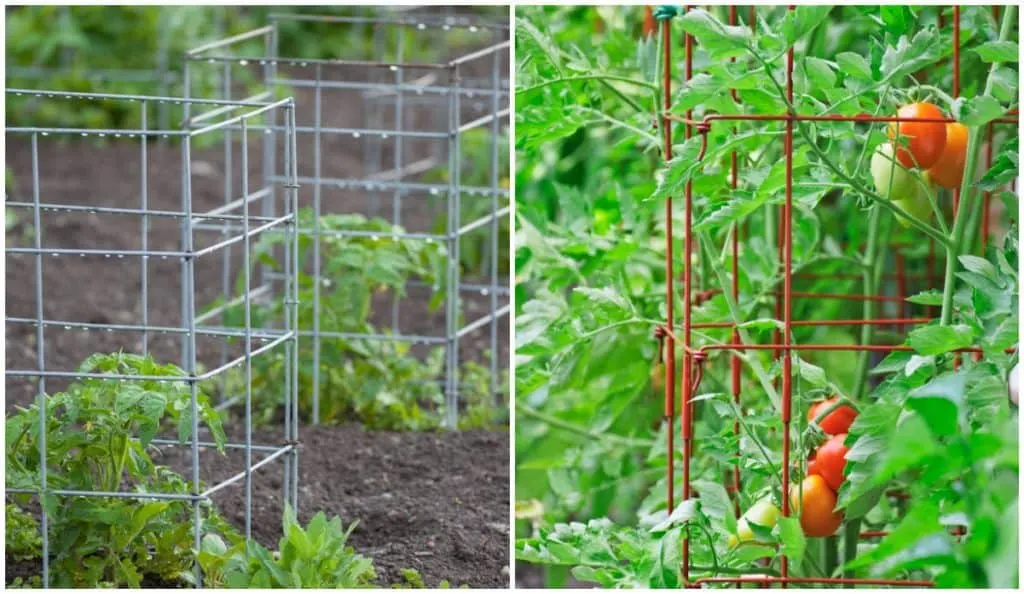
Tomato cages are a brilliant way to support your plants, but only if you’re using them properly.
Many well-meaning people end up doing more harm than good when it comes to cages, so it’s worth doing a little bit of research in advance. (You’re in the right place!)
So, if you want to avoid killing your tomatoes with kindness, this article will tell you everything you need to know.
How To Use A Tomato Cage (Step-By-Step)
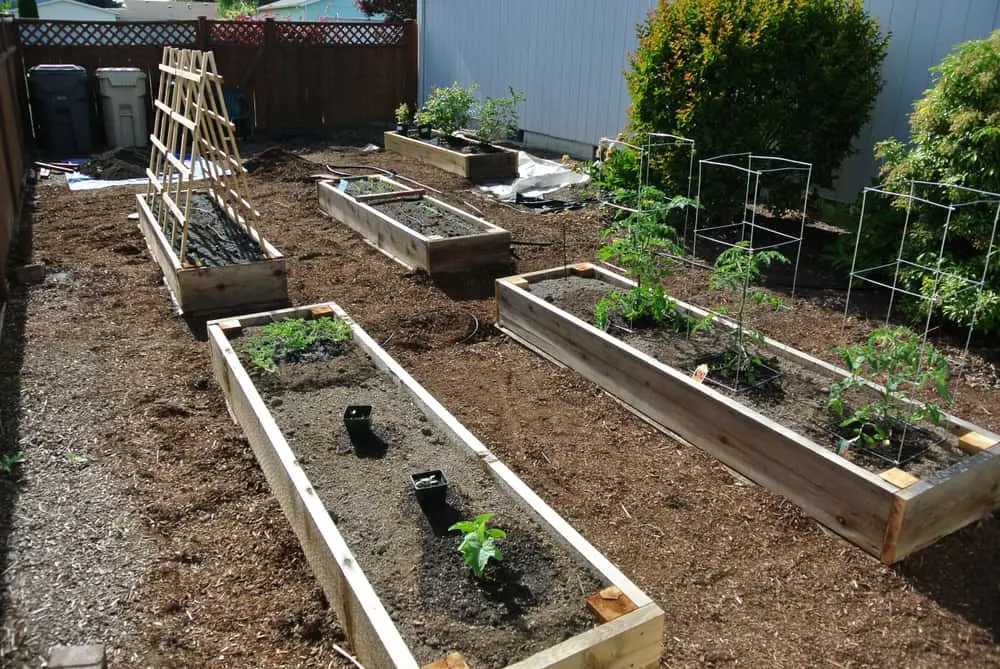
Don’t worry, using a tomato cage is pretty simple. Here are the 4 key steps you need to know.
1. Select the right cage for your variety.
2. Set the legs in your container so they touch the bottom.
If you’re using a cage directly in the ground, push it firmly into the soil to a depth of around 8 inches. Either way, your seedling should sit in the center of the cage.
3. Secure the cage with soil.
In a container, this means adding the soil around the cage and patting it down firmly. In the ground, you can make sure the cage is deep enough by shaking it and ensuring there’s no wiggle. Make sure you leave plenty of space between plants. (Exactly how much will depend on the variety.)
4. Support the vines by gently pulling them through the cage squares.
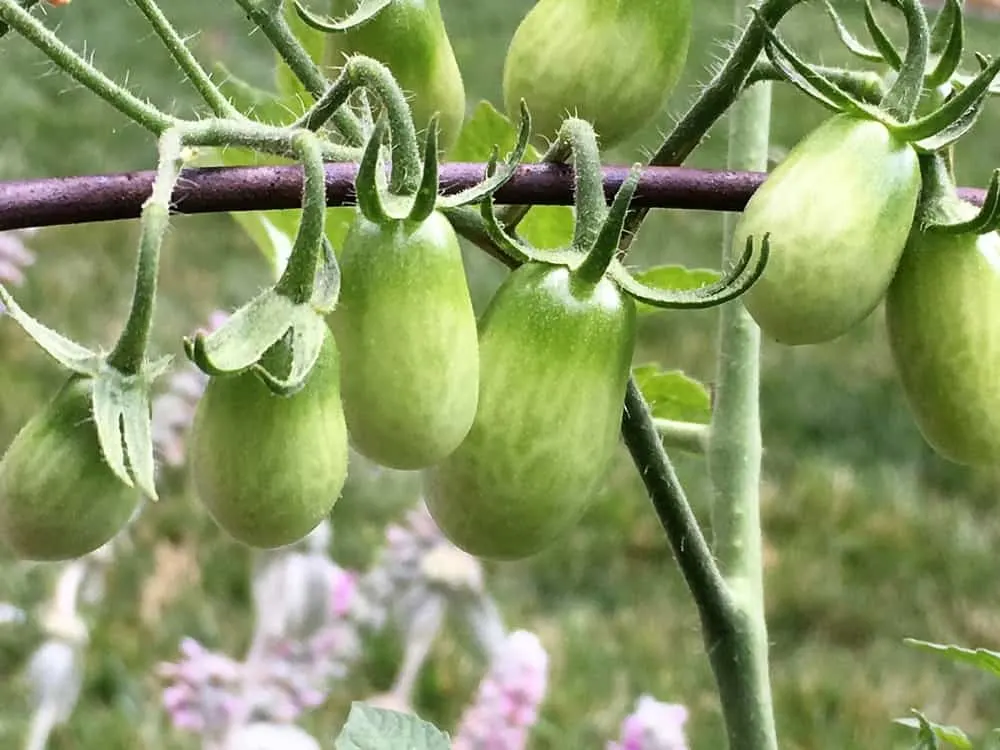
Smaller vines can be encouraged to grip the cage, whilst heavier ones can be loosely tied with garden twine. You will have to keep tying more vines as the plant grows. You will also need to do some pruning as you go along, but I’ll give you some quick pointers on that in the next section.
6 Tips For Using A Tomato Cage Properly
1. Work Out If You Really Need It
A cage provides the structure that some tomatoes need to thrive. Without this support, they are more vulnerable to pests, and the stems can snap under the weight of the plant.
But cages aren’t always appropriate!
Before going ahead and investing in some tomato cages, you need to make sure they are suitable for the variety you are growing. Tomato cages offer brilliant support for bush varieties (determinates), which stop growing after reaching a certain size.
If you are growing a vine variety (indeterminate), you would be much better off with a trellis. You could also use stakes instead of a cage, but they don’t offer the same level of support.
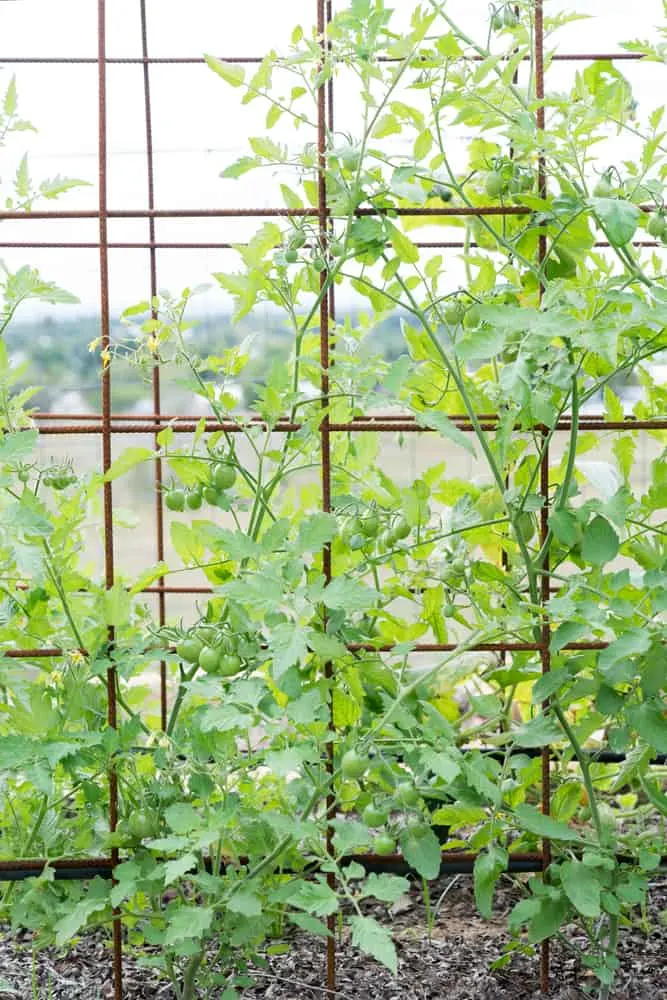
Aside from stakes and cages, there are also many other ideas for supporting your tomato plants. Here are 38 interesting and creative ideas.
2. Get The Right Size For Your Plant
Once you’ve established that you’re growing a determinate variety, it’s time to think about size.
If you choose a tomato cage that isn’t tall enough, your plant is going to spill over the top, and the vines might snap under their own weight. Some tomato varieties can grow up to 10 ft tall so it’s important your cages can support such a tall plant.
Remember that you will sink a good eight inches of your tomato cage into the ground for stability, and that should be accounted for when considering the dimensions you choose.
3. Don’t Waste Your Money

The most common type of tomato cage is actually the last one you want to be buying!
These are the light-duty, cone-shape cages that are available from pretty much every garden center. They might be cheap, but you’ll notice you can snap the wire with just a small amount of effort. (Probably don’t test this out in the garden center, or the manager won’t be too impressed.)
Why does this matter? Well, it needs to be able to support the weight of the plant as it grows fully. If the cage snaps, then you’ve wasted your money for no good reason, and your precious tomato vine might just break along with it.
Another reason that cone-shaped cages aren’t the best choice is that they offer less support at the base, exactly where it is needed. You’d be much better off with a sturdy, cylindrical shape tomato cage that offers decent support from the ground up.
(If you’ve already got the cone-shaped tomato cages, it’s no big deal. It’s a waste of your money and the earth’s resources to throw something out if it’s working for you. It’s just something to consider for next time!)
4. Set them deep into the ground
If you don’t set your tomato cage deeply enough in the ground, the whole thing can just blow over or be pulled down by the weight of the plants.
You can use cages in containers or directly in the garden, but they need to be set around 8 inches into the soil either way.
5. Don’t tie your vines too tightly
Most beginner tomato growers tie their vines far too tightly to the cage.
While it’s understandable that you want those plant babies well supported, you’re actually going to suffocate them. (Just like teenagers, tomatoes need some space to grow.)
So although your plants do need to be secured to the cage, don’t overdo it.
6. Don’t neglect your pruning
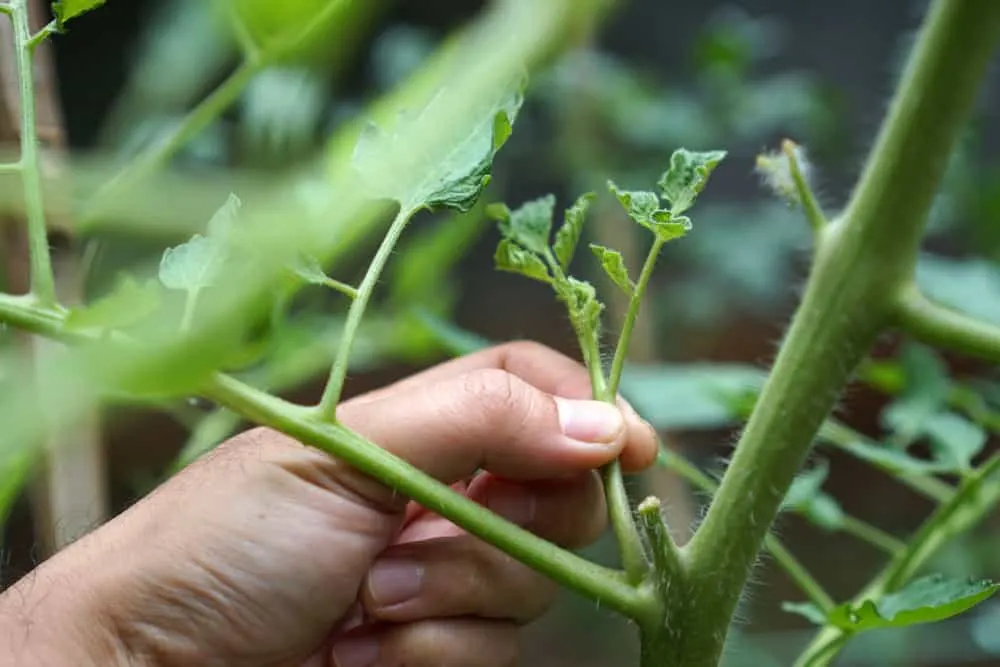
Tomato cages can make pruning a bit more fiddly, but that doesn’t mean you shouldn’t bother trimming the leaves.
If you don’t prune your plants, you’ll have a smaller and less tasty yield because the extra energy that goes to growing foliage won’t make its way into the fruit.
All varieties will be different, but a good rule of thumb is to trim up to 30% of leaves.
Of course, you can’t trim all the leaves, or the plant will die. The green leaves use the sun’s energy for photosynthesis, which converts carbon into sugar (for the plant) and oxygen (a crucial byproduct for us humans!)
This process is also how the plant stores carbon, so healthy foliage is essential for human and tomato survival. (Who knew the two went hand in hand!)
Types Of Tomato Cage
Tomato cages can come in many different shapes and sizes. But be careful, some of them aren’t really up to the job.
Cone Shape
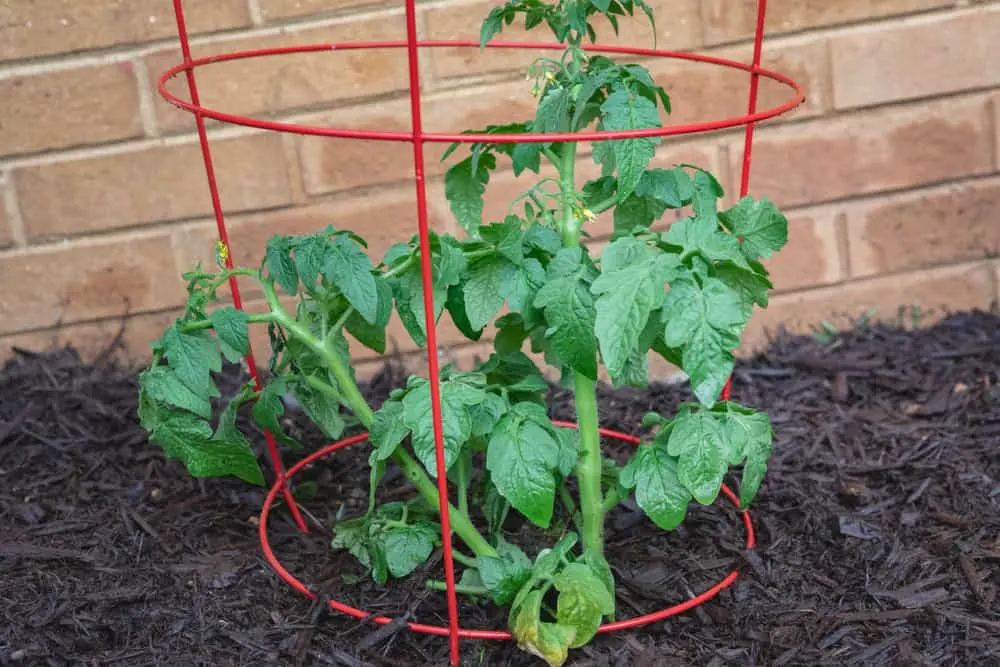
The most common type of tomato cage is the cone shape, which is wider at the top and thinner at the bottom. As I mentioned before, these are pretty flimsy, and they don’t give enough support at the base of your plant. Avoid these!
Tripod
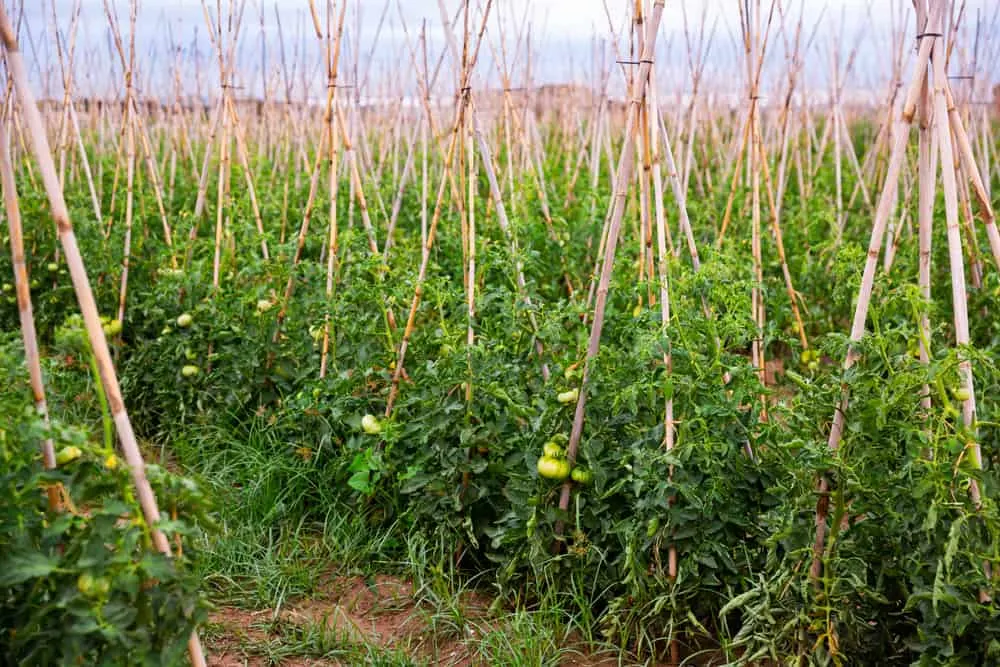
Another option is a tripod, which people regularly make themselves.
All you have to do is make a teepee shape with a few bamboo canes and then tie electric fencing wire around it at intervals, creating the cage squares. (People often use electrical fencing because it’s sturdy, waterproof, and flexible. You should not attempt to electrocute your plants!)
You can also buy metal tripod cages which are generally more secure.
Heavy Duty Square Tomato Cages
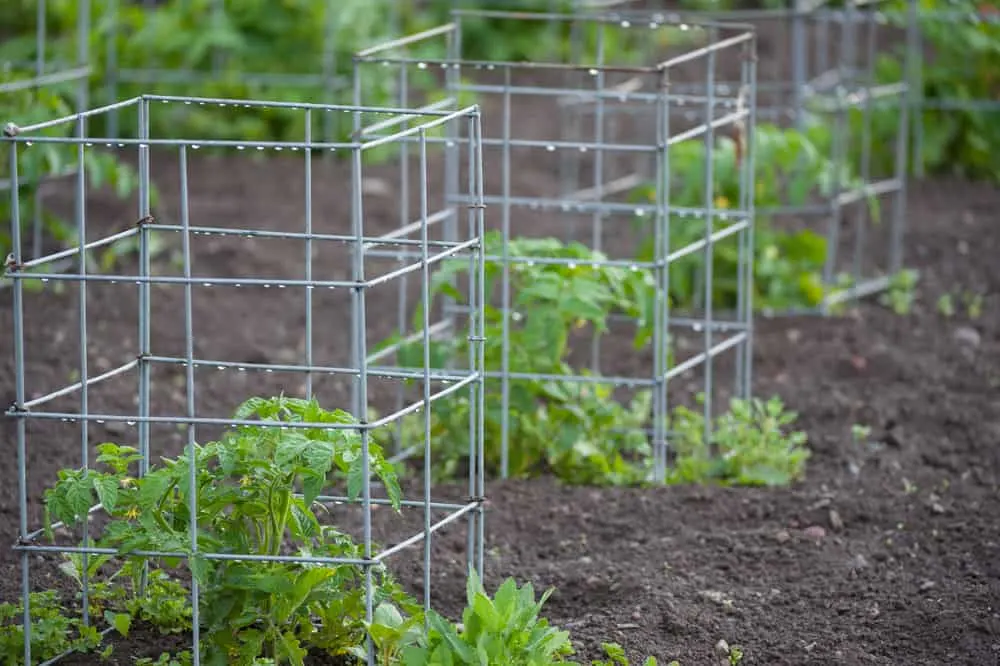
While most heavy duty tomato cages are square, they can also be round or triangular. The significant difference between these and the cone style is that they don’t flare out at the top. This means support is provided equally throughout the structure, and the cage is sturdier.
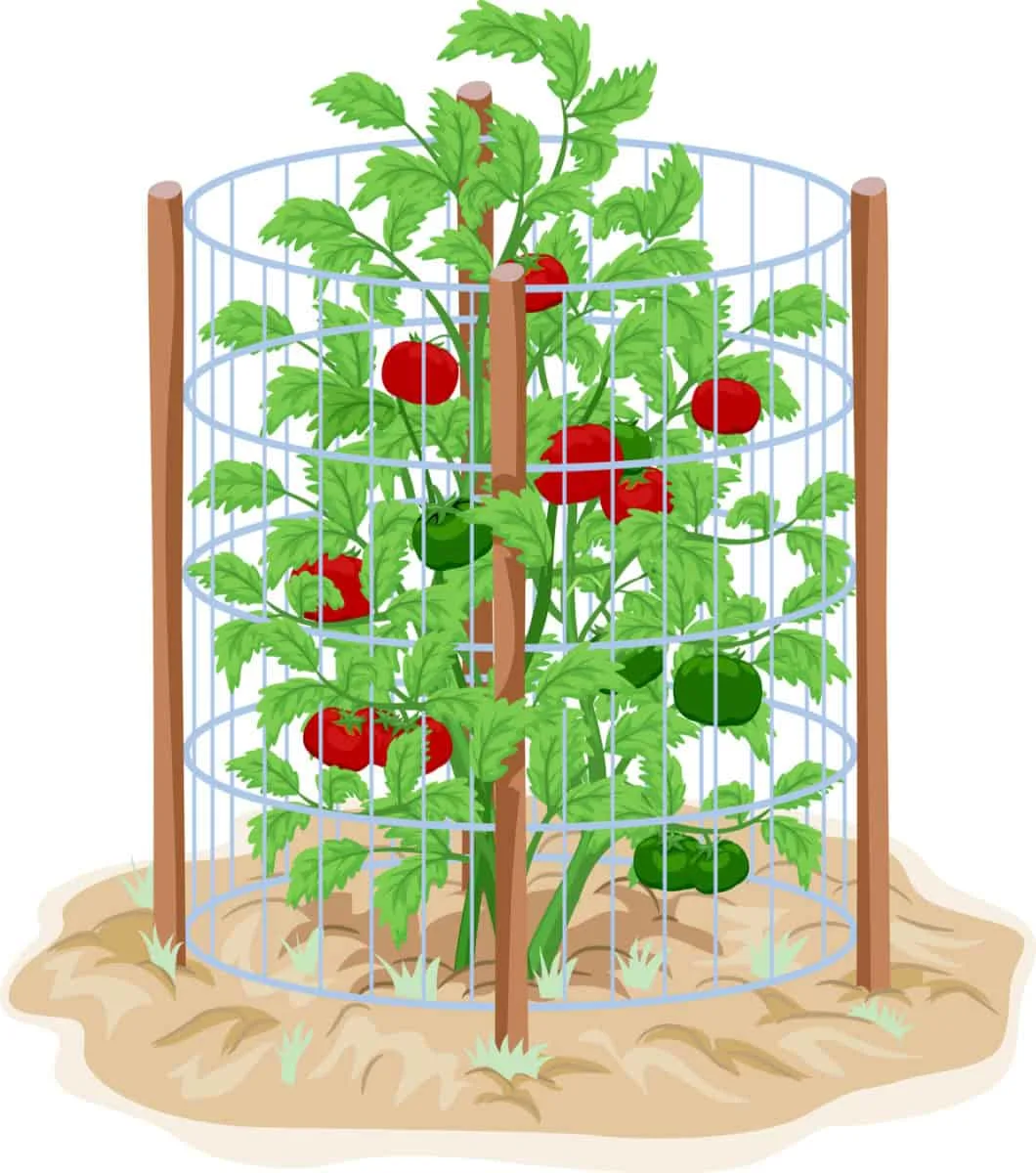
Heavy duty square tomato cages are my favorite type of cage. They cost more than the flimsy cone cages, but you can use them for years, so the price difference is soon made up for.
Here’s a great Amazon listing from the reputable garden store, Burpee, selling three heavy duty square tomato cages.
Making Your Own DIY Tomato Cage
Some people would say that buying a tomato cage from a garden center is a waste of money. After all, you can often make something even sturdier at home at a fraction of the price.
How To Make A Tomato Cage
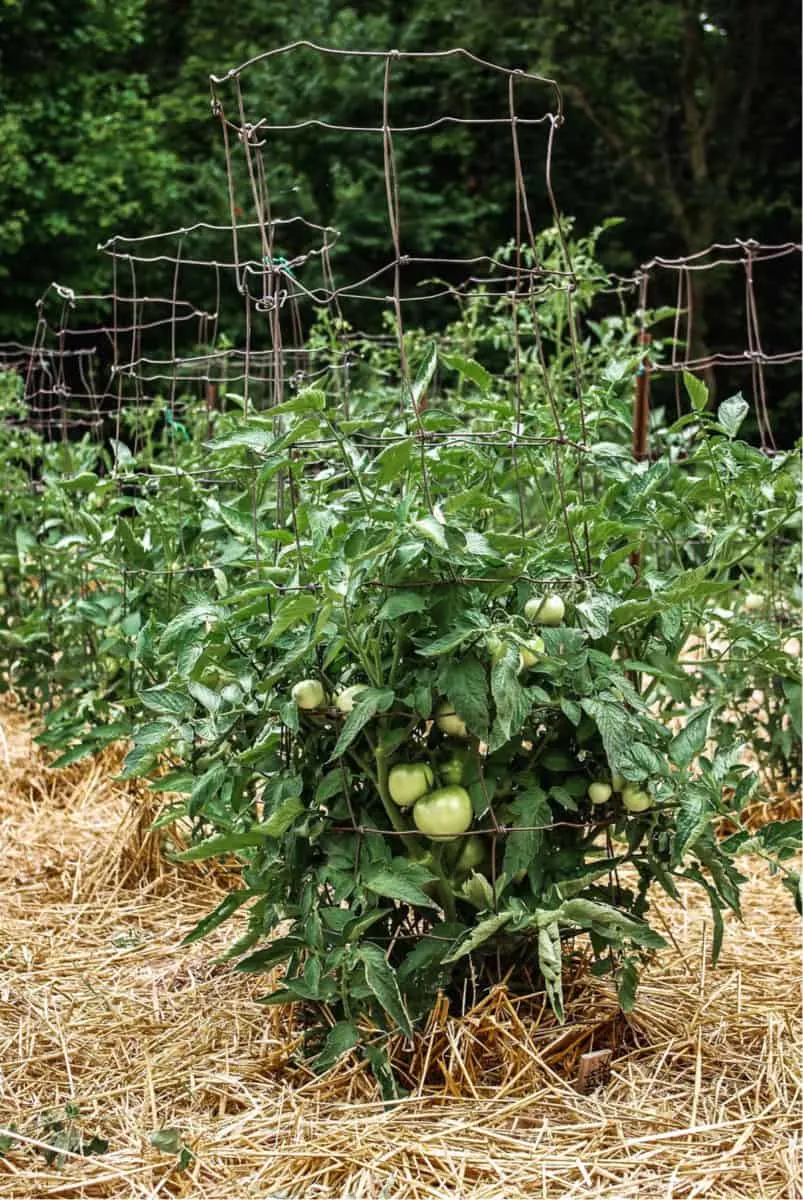
One popular way to make a tomato cage is to get a roll of metal fencing, snip it into smaller rectangular pieces with wire cutters, and roll it into tubes. You can then use cable ties to secure it.
The great thing about this method is you can just cut the cable ties at the end of the growing season, and the fencing becomes flat again for easy storage.
Just don’t forget to cut some hand holes for yourself and to snip around the base to create feet that you can sink into the ground for stability.
The type of fencing depends on your preference, but a 14 gauge wire with 2×4 inch holes would be a great place to start. The height you choose will depend on the variety you are growing.
Here’s a great tutorial from Homestead & Chill for making your own tomato cage from wire fencing.
NB: You’ll want to wear gloves to avoid cutting your hands on the sharp wire.
Is making your own cage worth the effort?
It comes down to personal choice.
If you have a lot of land and you’re going to be growing many plants, it is definitely cheaper to make your own cages. If you’re only growing a couple of seedlings, then you’re going to end up spending more money on the materials than you would buying cages.
Final Thoughts
Tomato cages are a brilliant way to offer support to your tomato plants as they grow, but only if you use them correctly. You need to choose a good-quality cage that is the right size for your variety.
If you set your cage deeply in the ground, keep your plants suitably pruned, and don’t tie your vines too tightly, you can expect a bumper crop of delicious fruit this planting season.
